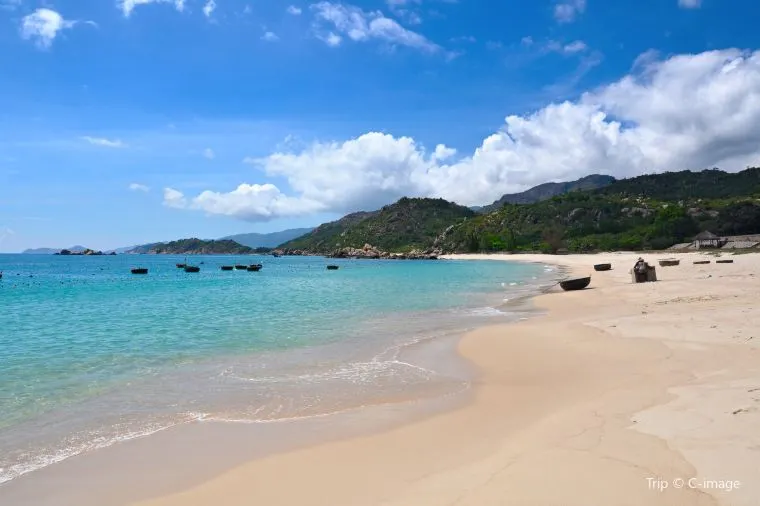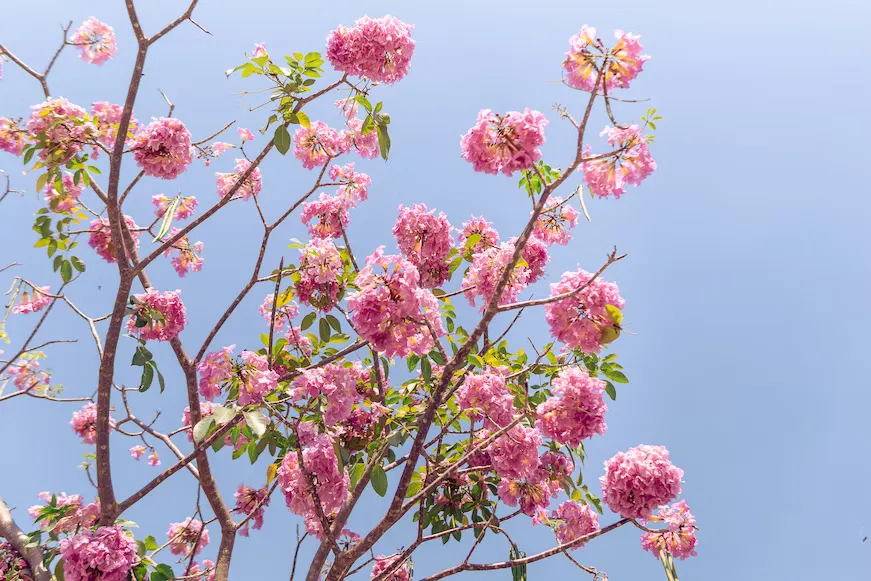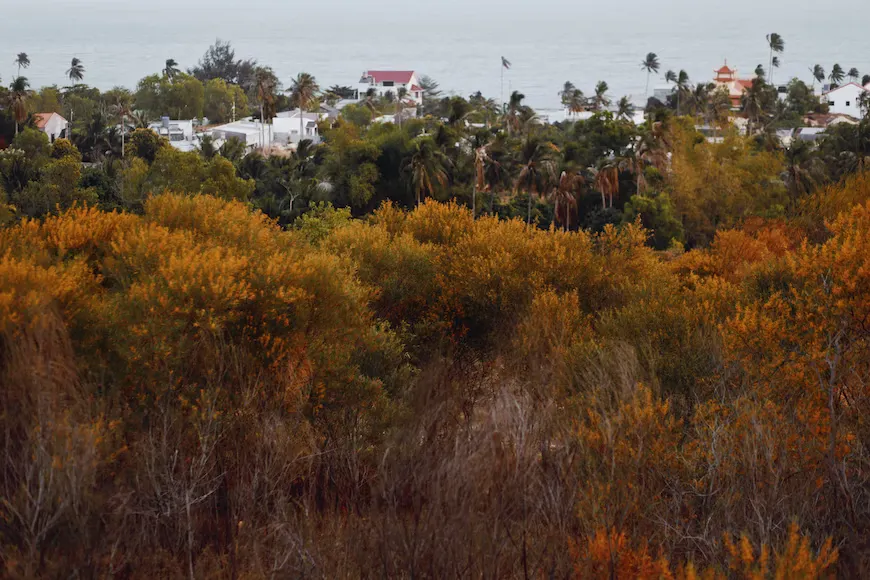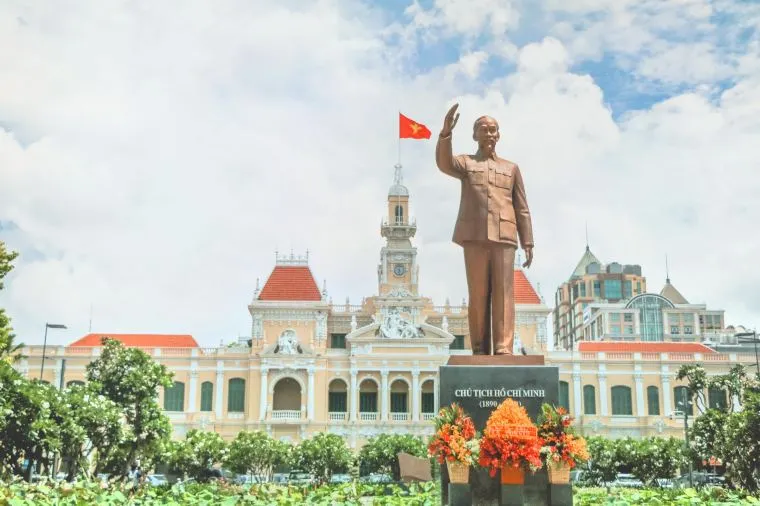The climate of Vietnam has different characteristics depending on the region due to the long country from north to south and the influence of mountains and oceans. Winters will be colder in the north, while summers will be hot and wet.
In this article, I will explain the characteristics of Vietnam's climate, recommended clothing, and differences from Japan.
[Average temperature in Vietnam]
| Month | Hanoi (℃) | Ho Chi Minh(℃) | Da Nang (℃) | Hue (℃) | Hoi An (℃) |
| January | 17 | 27 | 24 | 22 | 23 |
| February | 18 | 28 | 25 | 23 | 24 |
| March | 21 | 30 | 26 | 24 | 26 |
| April | 25 | 33 | 28 | 26 | 28 |
| May | 28 | 34 | 30 | 28 | 30 |
| June | 29 | 33 | 31 | 29 | 33 |
| July | 29 | 32 | 32 | 29 | 34 |
| August | 29 | 32 | 32 | 29 | 34 |
| September | 28 | 31 | 29 | 27 | 31 |
| October | 26 | 30 | 27 | 25 | 28 |
| November | 22 | 28 | 25 | 23 | 26 |
| December | 18 | 26 | 24 | 21 | 24 |
What are the characteristics of Vietnam's climate and recommended clothing? Compare the difference with Japan
Climate characteristics of Vietnam

Vietnam is a long country extending from north to south, and is characterized by different climates depending on the region. The northern region is affected by cold waves from November to February of the following year, sometimes dropping below freezing. However, the summer months will be hot and wet, with typhoons from July to September.
The central region is hot throughout the year and is characterized by distinct climate changes between the wet and dry seasons. Floods occur frequently during the rainy season from June to October.
The south has a tropical climate, hot and humid throughout the year. The rainy season runs from May to November, and it rains almost every day. The central and southern regions in particular are affected by the monsoons, which can cause heavy rains and floods during the rainy season. When planning your trip to Vietnam, check the climate and weather information for each region before setting out.
Vietnamese climate in spring (March to May)

In the spring of Vietnam (March to May), the northern regions begin to gradually get warmer, and cherry blossoms may begin to bloom in mid-March. However, there are occasional cold spells, so heavy clothing is required.
The central region enters the dry season after the rainy season, and the temperature rises. On the other hand, the southern region has a hot and humid climate. March, before the rainy season ends, is relatively cool and comfortable as the end of the dry season, but from April onwards the temperature rises sharply, sometimes exceeding 30°C.
Also, the southern region is prone to sudden temperature changes and thunderstorms during the rainy season, so be sure to check the weather information when planning your trip.
Summer climate in Vietnam (June to August)

In the summer of Vietnam, the temperature rises sharply in the northern region after the rainy season. The temperature will be over 30 degrees Celsius every day. Natural disasters such as floods caused by typhoons and heavy rains also occur, so be careful when planning your trip.
The central region is hot and humid, and it is not uncommon for days to exceed 35°C. Also, typhoons and storms occur from June to September, so it's important to check the weather information when planning your trip.
However, summer is the travel season in beach resort areas, so many people enjoy swimming and sightseeing. Those who are sensitive to heat and humidity should be careful not to get heatstroke.
Autumn climate in Vietnam (September to November)

The climate of Vietnam in autumn is refreshing and comfortable in the northern region. Especially in September, although the lingering heat may linger, it gradually cools down.
Typhoons occur in the central region from August to October, so you need to be careful, but November is a pleasant season when the weather is stable. The southern region gets cooler from October to November, with temperatures between 25°C and 30°C making it more comfortable.
Autumn in Vietnam is considered to be the best season for traveling. Especially in the northern part of the country, you can enjoy the scenery of rice harvesting along with the autumn leaves turning yellow from October to November. Also in the central region, Hoi An hosts an autumn festival. If you want to know more, you can refer to this article.
Winter climate in Vietnam (December to February)

Winters in Vietnam are dry and cold in the northern regions. Temperatures can drop below freezing in mountainous areas, so it is necessary to take measures against the cold.
However, the Chubu region is relatively warm and comfortable even in winter. The southern regions are in the after season of heat and humidity, and cool breezes make it pleasant. However, during Christmas and New Year's holidays, the number of travelers increases, so you need to be careful about hotel reservations and traffic congestion.
In addition, January 1st is an important holiday in Vietnam called "Tet" (Lunar New Year), and many shops and tourist facilities are closed during this time. So be careful when planning your trip. If you want to know more, you can refer to this article.
Average temperature in Vietnam

[Average temperature in Vietnam]
| Month | Hanoi (℃) | Ho Chi Minh(℃) | Da Nang (℃) | Hue (℃) | Hoi An (℃) |
| January | 17 | 27 | 24 | 22 | 23 |
| February | 18 | 28 | 25 | 23 | 24 |
| March | 21 | 30 | 26 | 24 | 26 |
| April | 25 | 33 | 28 | 26 | 28 |
| May | 28 | 34 | 30 | 28 | 30 |
| June | 29 | 33 | 31 | 29 | 33 |
| July | 29 | 32 | 32 | 29 | 34 |
| August | 29 | 32 | 32 | 29 | 34 |
| September | 28 | 31 | 29 | 27 | 31 |
| October | 26 | 30 | 27 | 25 | 28 |
| November | 22 | 28 | 25 | 23 | 26 |
| December | 18 | 26 | 24 | 21 | 24 |
Annual temperature in Hanoi
Hanoi is located in the northern region, and the annual average temperature is around 22 degrees Celsius. The months of May to October are hot and humid. On the other hand, November to April will be a relatively dry and pleasant season.
Annual temperature in Ho Chi Minh City
Ho Chi Minh City is located in the southern region and has an average annual temperature of 28°C. April to June are particularly hot and muggy. November to January, on the other hand, is a cooler and more pleasant season.
Annual temperature in Da Nang
Da Nang is located in the central region, and the annual average temperature is around 25 degrees Celsius. From June to August, temperatures are high and typhoons can occur. On the other hand, January to March is a relatively cool and comfortable season.
Annual temperature in Hue
Hue is located in the central region, and the average annual temperature is around 24 degrees Celsius. From June to August it gets hot and muggy. January to March, on the other hand, is a relatively dry and pleasant season.
Annual temperature in Hoi An
Hoi An is located in the central region, and the average annual temperature is around 25 degrees Celsius. The months of June to August are hot and humid.
However, January to March is a relatively dry and pleasant season. Also, it can get cold at times from December to February.
Precipitation in Vietnam

[Precipitation in Vietnam]
| Month | Hanoi (mm) | Ho Chi Minh (mm) | Danang (mm) | Hue (mm) | Hoi An (mm) |
| January | 18 | 13 | 60 | 48 | 29 |
| February | 28 | 4 | 30 | 55 | 18 |
| March | 34 | 13 | Ten | 71 | 30 |
| April | 93 | 109 | 26 | 130 | 88 |
| May | 240 | 342 | 142 | 227 | 195 |
| June | 274 | 331 | 156 | 276 | 224 |
| July | 288 | 288 | 291 | 313 | 288 |
| August | 307 | 326 | 291 | 340 | 322 |
| September | 261 | 290 | 560 | 433 | 383 |
| October | 87 | 326 | 800 | 449 | 545 |
| November | 36 | 160 | 470 | 188 | 315 |
| December | 13 | 32 | 260 | 72 | 159 |
Precipitation in Hanoi
Hanoi is located in the northern region, and the annual rainfall is about 1700mm. From June to September, it rains a lot.
Precipitation in Ho Chi Minh City
Ho Chi Minh City is located in the southern region and has an annual rainfall of about 2000mm. From May to November, it rains a lot .
Da Nang precipitation
Da Nang is located in the central region and has an annual rainfall of about 2500mm. From September to November, it rains a lot.
Hue Precipitation
Hue is located in the central region and has an annual rainfall of about 2500mm. From September to December, it rains a lot.
Hoi An Precipitation
Hoi An is located in the central region and has an annual rainfall of about 2500mm. From September to January, it rains a lot.
Understand the climate of Vietnam and go abroad!

Vietnam has a mild climate throughout the year, making it a comfortable country to live in. It is also famous as a country with many Japanophiles, and everyone from first-timers to veterans of overseas trips should be satisfied.
Why don't you go to Vietnam on your next overseas trip? Trip.com sells discount Vietnam travel tickets . If you are interested, please check it out.
